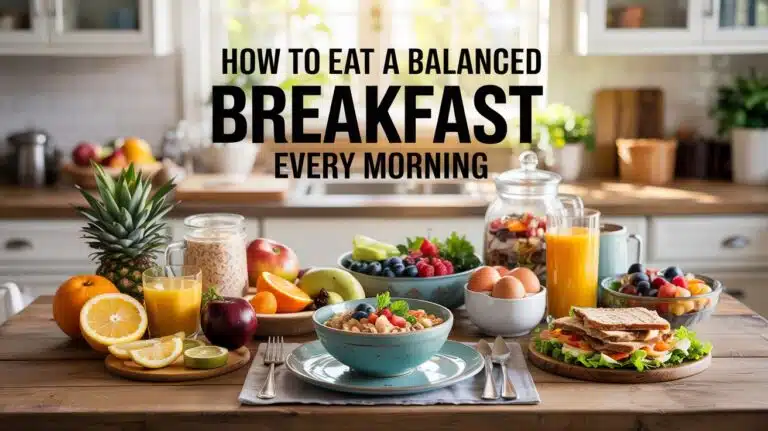In today’s fast-paced work environment, it’s easy to fall into the trap of working non-stop in an attempt to get more done.
But, have you ever considered that taking regular breaks could actually make you more productive? It might seem counterintuitive, but science supports the idea that stepping away from your desk can boost your efficiency and overall well-being.
Let’s dive into why taking regular breaks is essential and how it can be the secret to unlocking your full potential at work.
The Science Behind Breaks
Breaks allow your brain to rest and recharge, preventing cognitive fatigue. By stepping away periodically, you restore mental energy, which enhances focus and decision-making abilities.
Scientific research supports that regular breaks improve productivity by giving your brain the downtime it needs to function optimally.
The Role of the Brain
Our brains aren’t wired to focus for long periods without rest. When you’re working on a task, your brain’s neurons are firing constantly, which uses up a lot of energy.
This is why after a few hours of work, you might start feeling mentally drained. Taking a break lets your brain rest and recharge, so you can return to work feeling refreshed and focused.
Cognitive Fatigue
Cognitive fatigue is the mental exhaustion that sets in after prolonged periods of concentration. It’s similar to physical fatigue, but instead of your muscles getting tired, it’s your brain that needs a rest.
When cognitive fatigue sets in, your ability to think clearly, make decisions, and solve problems diminishes. Regular breaks can help prevent cognitive fatigue, keeping your mind sharp and ready to tackle the tasks at hand.
Benefits of Taking Regular Breaks
Regular breaks boost focus, creativity, and physical health. Short breaks prevent mental burnout, helping you stay sharp and engaged.
They also reduce stress, alleviate physical strain from prolonged sitting, and provide opportunities for creative thinking by allowing your mind to wander and form new connections.
Enhanced Focus
One of the biggest benefits of taking regular breaks is improved focus. When you work for extended periods without a break, your attention starts to wane, and your mind can easily wander.
By taking short, frequent breaks, you give your brain a chance to reset, which helps you stay focused and engaged in your work.
Boosted Creativity
Ever noticed how some of your best ideas come to you when you’re not actively thinking about the problem? That’s because breaks give your brain the space it needs to make new connections and generate creative ideas.
Whether it’s a quick walk, a chat with a colleague, or simply staring out the window, stepping away from your work can spark the creativity you need to solve complex problems.
Better Physical Health
Sitting at a desk for hours on end isn’t just bad for your mind—it’s bad for your body too.
Regular breaks that involve movement, like stretching or taking a walk, can reduce the risk of developing health issues like back pain, eye strain, and even heart disease.
Plus, these breaks can lower your stress levels, leading to better overall well-being.

Types of Breaks
Different types of breaks include micro-breaks, lunch breaks, and movement breaks. Micro-breaks are short, frequent pauses, while lunch breaks allow for a longer rest.
Movement breaks involve physical activity, which helps reduce stress, improve circulation, and enhance overall well-being during the workday.
Micro-breaks
Micro-breaks are brief, frequent pauses that last between 30 seconds and 5 minutes. These breaks are perfect for giving your brain a quick rest without interrupting your workflow.
You can use micro-breaks to stretch, take a few deep breaths, or simply close your eyes and relax. Even a few minutes can significantly improve how you feel.
Lunch Breaks
Lunch breaks are more than just a time to eat—they’re a crucial part of your workday. Taking a proper lunch break away from your desk gives you a chance to recharge both mentally and physically.
It’s an opportunity to refuel your body with healthy food, catch up with colleagues, and take a much-needed break from your screen. When you return to work after a lunch break, you’re more likely to feel refreshed and ready to tackle the rest of your day.
Movement Breaks
Incorporating movement into your breaks is one of the best things you can do for your health. Whether it’s a quick walk around the block, a few stretches, or even a mini-workout, movement breaks help get your blood flowing, reduce stress, and boost your energy levels.
These breaks are especially important if you have a sedentary job that requires you to sit for long periods.

Implementing Regular Breaks in Your Workday
To incorporate breaks effectively, schedule them into your day. Set reminders to take short, frequent breaks and a longer lunch break. Balance work and rest by experimenting with different intervals.
Utilize tools like timers or productivity apps to help establish a consistent break routine that maximizes productivity.
Scheduling Breaks
The key to taking regular breaks is to schedule them into your day. If you wait until you feel tired or overwhelmed, it’s often too late.
By planning your breaks ahead of time, you can ensure that you’re giving your brain and body the rest they need to stay productive. You might find it helpful to set a timer or use an app that reminds you when it’s time to take a break.
Finding the Right Balance
While breaks are important, it’s also crucial to find the right balance between work and rest. Too many breaks can interrupt your workflow, while too few can lead to burnout.
The goal is to find a rhythm that works for you, whether it’s taking a 5-minute break every hour or a longer break every few hours. Experiment with different schedules until you find what helps you stay focused and productive.
Tools and Techniques
There are plenty of tools and techniques available to help you incorporate regular breaks into your workday. From apps that remind you to stand up and stretch, to the Pomodoro Technique, which alternates between 25 minutes of focused work and 5-minute breaks, there’s something out there for everyone. Discover what suits you best and incorporate it consistently into your routine.

Common Myths About Breaks
Common myths include thinking breaks waste time or that powering through work is more efficient. In reality, skipping breaks leads to burnout and reduced productivity.
Regular breaks are essential for maintaining energy, focus, and creativity, ultimately leading to better overall performance and job satisfaction.
Breaks are a Waste of Time
One of the most common misconceptions about breaks is that they’re a waste of time. Some people believe that working non-stop is the best way to get more done, but this couldn’t be further from the truth.
Breaks are essential for maintaining productivity, and skipping them can actually lead to slower progress and more mistakes.
Powering Through Work is Better
Another myth is that it’s better to power through work without taking breaks. While this might work in the short term, it’s not sustainable in the long run.
Without regular breaks, you’re more likely to experience burnout, which can lead to decreased productivity and even health problems. Taking breaks allows you to work more efficiently and avoid the negative effects of overworking.
Case Studies and Real-Life Examples
Successful companies like Google and Microsoft promote regular breaks, resulting in increased productivity and job satisfaction. Personal stories highlight how breaks can overcome creative blocks, improve mood, and boost energy levels.
Real-life examples demonstrate the tangible benefits of integrating breaks into daily work routines.
Successful Companies
Many successful companies understand the importance of breaks and encourage their employees to take them regularly. For example, companies like Google and Microsoft have implemented policies that allow employees to take breaks throughout the day.
These companies have found that regular breaks lead to increased productivity, creativity, and overall job satisfaction.

FAQs About Regular Breaks
How long should a break be?
The ideal break length can vary depending on your needs, but a good rule of thumb is to take a 5-10 minute break every hour and a longer 30-60 minute break during lunch.
What if I feel guilty taking breaks?
It’s normal to feel guilty, especially in a fast-paced work environment, but remember that breaks are essential for your productivity and well-being. Think of them as an investment in your efficiency.
Can breaks help with creativity blocks?
Absolutely! Taking a break can give your brain the space it needs to make new connections and come up with creative solutions. Great ideas often surface when you're not directly focused on the problem.
Should I avoid screens during breaks?
It’s a good idea to avoid screens during breaks, especially if your work involves a lot of screen time. Instead, try stretching, walking, or doing something that gives your eyes a rest.
How often should I take a break?
It’s recommended to take a short break every hour and a longer break during lunch. However, listen to your body and take breaks as needed to avoid burnout.
Key Takeaways:
- Breaks Boost Productivity: Taking regular breaks helps improve focus, creativity, and overall work efficiency, preventing burnout and cognitive fatigue.
- Types of Breaks Matter: Incorporating different types of breaks—like micro-breaks, lunch breaks, and movement breaks—can positively impact both mental and physical health.
- Scheduled Breaks Are Essential: Planning and scheduling breaks into your workday ensures you maintain a healthy balance between work and rest, leading to sustained productivity.
- Debunking Myths: Contrary to common myths, taking breaks isn’t a waste of time; it’s a necessary practice to maintain long-term productivity and well-being.
- Real-World Success: Both successful companies and individuals have demonstrated the benefits of regular breaks, showcasing their importance in achieving better work outcomes.
Taking regular breaks at work isn’t just a nice-to-have—it’s a necessity. From improving focus and creativity to boosting your physical and mental health, the benefits of taking breaks are clear.
By scheduling regular breaks into your workday and finding the right balance between work and rest, you can increase your productivity and enjoy a more fulfilling work experience.
So, the next time you’re tempted to power through without a break, remember that stepping away might be the best thing you can do for your productivity.




